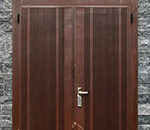 The use of light in a photograph can be the deciding factor of whether that picture will be spectacular or terrible. When you use your camera to automatically chose aperture and shutter speed, what your camera is actually doing is using the built in light meter and measuring how much light is being reflected to the camera.
The use of light in a photograph can be the deciding factor of whether that picture will be spectacular or terrible. When you use your camera to automatically chose aperture and shutter speed, what your camera is actually doing is using the built in light meter and measuring how much light is being reflected to the camera.
But that doesn’t mean that’s all there is to it. You should also think about the angle of the light entering the frame, what kind of shadows you want, and whether you want to use fill-in-flash (using flash to light the subject if you have a really bright background). If you are shooting at night you can create all sorts of cool effects like lights in motion, pictures with moonlight, or silhouettes like the one shown here. The following are just some examples of all the possibilities.
 The angle of light should be taken into careful consideration whenever you feel like you want to create a specific effect. Shadows can be very powerful when cast over half of someone’s face. In this photo on the left the light is striking the statue’s face from the rear right of the camera and this adds more depth to the picture. It also adds more coloring because if front-lighting was used his face would likely be over exposed, and if back-lighting was used his face would just be black like a silhouette.
The angle of light should be taken into careful consideration whenever you feel like you want to create a specific effect. Shadows can be very powerful when cast over half of someone’s face. In this photo on the left the light is striking the statue’s face from the rear right of the camera and this adds more depth to the picture. It also adds more coloring because if front-lighting was used his face would likely be over exposed, and if back-lighting was used his face would just be black like a silhouette.
 The effect of rays of light indoors and outdoors. can be very spectacular. A brilliant part of some great photographs is the ability to see actual rays of light. Whether it be in the setting of a brilliant sunset, light pouring through a window or from artificial lights it can look very impressive. Usually the only way to obtain something like this is a narrow aperture (high f/stop) and a very slow shutter speed.
The effect of rays of light indoors and outdoors. can be very spectacular. A brilliant part of some great photographs is the ability to see actual rays of light. Whether it be in the setting of a brilliant sunset, light pouring through a window or from artificial lights it can look very impressive. Usually the only way to obtain something like this is a narrow aperture (high f/stop) and a very slow shutter speed.
Silhouettes are another interesting example of using light. The way to create a silhouette is to have significantly brighter light coming from behind the subject. In doing this it is important to take your camera light reading off of the background instead of the subject in order for the camera to adjust for an exposure based on the backlight. If you do this the subject will be successfully underexposed like in the picture at the top of this page.

The shutter speed was set for around 30 seconds, the camera was set on a tripod and someone stood next to the camera with a flashlight. The subject then stood in one place while the flashlight was pointed at him and moved in an up and down motion. After around 15 seconds the flashlight was turned off and the subject was told to move to his left. Then the flashlight was pointed at him again and moved up and down until the camera finished the exposure.
For Further Training on Using Light:
Check out this popular eBook designed to help photographers learn how to use light more effectively. PictureCorrect readers can receive more than 15% off by entering the discount code picturecorrect before purchasing. It can be found here: Seeing the Light
Like This Article?
Don't Miss The Next One!
Join over 100,000 photographers of all experience levels who receive our free photography tips and articles to stay current:






Thank you so much for sharing this.
I like the ideas you share. I came here for looking importance of light in photography and I found something more interesting than the exact subject. Thank you very much.
Good tips of using lights. Thank you for sharing!
wow! I love these photos! These are amazing. Thank you so much for sharing this.
thanks for this info. I am inspired to play with light in my photograph. will post in my blog soon. Great work.